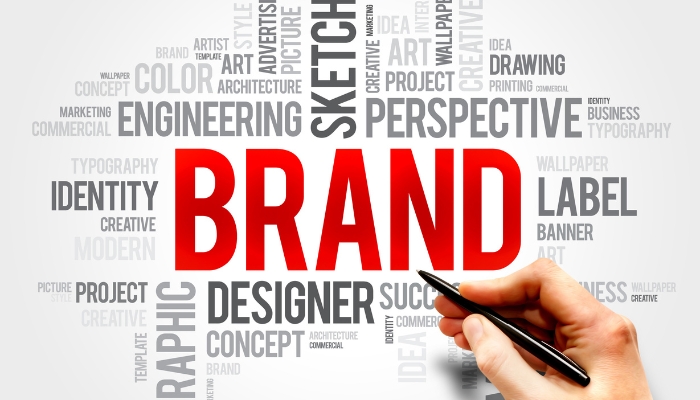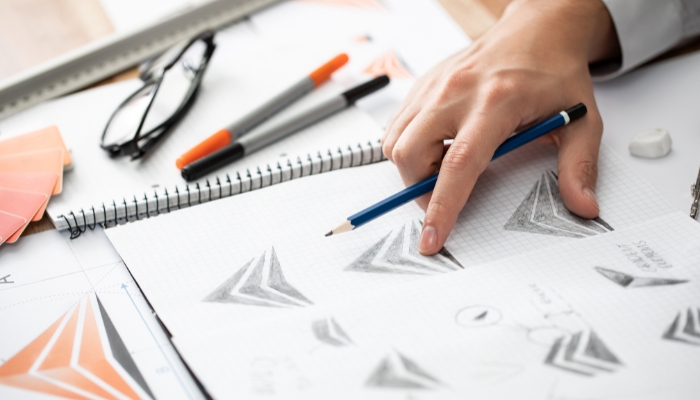INTRODUCTION:
Designing a logo for your business is an important step in creating your brand identity. The logo is often the first thing people see when they encounter your brand, so it is crucial to create one that is memorable, eye-catching, and representative of your brand values and message. To design the best logo for your business, consider the following:
Begin by determining what your brand represents and what message you want to convey to your target audience. Research your competition and look at their logos to get an idea of what works and what doesn’t. When choosing colors for your logo, keep in mind that colors can evoke emotions and set the tone for your brand, so choose colors that are appropriate for your brand’s message and target audience.
When it comes to the type of logo, there are different options, such as typographical logos, icon-based logos, and combination logos. Decide which type of logo would work best for your brand. Remember that simplicity is key when it comes to logos. A simple logo is easier to remember and can be more effective than a complex one. Avoid using too many colors, fonts, or graphics in your design.
Make sure that your logo is scalable, meaning that it should look good in different sizes and on various platforms. Before finalizing your logo, test it out in different scenarios and get feedback from people in your target audience. This can help you make any necessary adjustments before the logo is launched.
If you’re not confident in your design skills, consider hiring a professional logo designer. They can bring your vision to life and create a logo that accurately represents your brand. Your logo is a critical part of your brand’s identity and will be used on all of your marketing materials, so take the time to design the best logo for your business.

Identifying Your Brand:
Identifying your brand is an essential part of establishing a successful and recognizable business. Your brand represents the essence and values of your business and sets it apart from others in the market. A well-defined brand can help you connect with your target audience, build trust, and establish a loyal customer base.
Your brand should be a reflection of what your business stands for and its core values. This includes the message you want to convey, the tone of your business, and the unique qualities that make your business different from others in the market. Understanding your target audience and their needs and wants is also crucial in defining your brand. This information can help you tailor your brand to best resonate with your target audience and meet their needs.
In addition to values and target audience, consider the visual elements of your brand such as your logo, color scheme, and typography. These elements should work together to create a consistent and recognizable brand image. The consistency of your brand across all marketing materials, including your website, social media, and advertisements, is important in creating a strong and recognizable brand.
It’s also important to understand that your brand is not just about what you say, but also about what you do. Your brand should be embodied in every aspect of your business, from customer service to product quality. Maintaining a consistent brand image and delivering on your brand promise is key to building trust and loyalty with your target audience. Define your brand values, understand your target audience, and create a consistent brand image to connect with your target audience, build trust, and establish a loyal customer base.

Choosing an Appropriate Logo Design:
Choosing the right logo design is an important step in creating a successful and recognizable brand. Your logo is often the first thing people see when they encounter your brand, and it should make a strong first impression. A well-designed logo can help you stand out in a crowded market and create a memorable and recognizable brand image.
When choosing a logo design, it’s important to consider the type of logo that would work best for your brand. There are different types of logos, including typographical logos, icon-based logos, and combination logos. Consider what type of logo would best represent your brand and convey your message to your target audience.
The colors you choose for your logo can also play a big role in creating a memorable and recognizable brand image. Colors can evoke emotions and set the tone for your brand, so choose colors that are appropriate for your brand’s message and target audience.
It’s also important to make sure your logo is simple and scalable. A simple logo is easier to remember and can be more effective than a complex one. Avoid using too many colors, fonts, or graphics in your design. Your logo should also look good in different sizes and on various platforms, such as your website, social media, and advertisements.
Finally, consider testing your logo design with your target audience before finalizing it. Getting feedback from people in your target audience can help you make any necessary adjustments to ensure your logo accurately represents your brand and resonates with your target audience.
Choosing the right logo design is an important step in creating a successful and recognizable brand. Consider the type of logo that would work best for your brand, choose appropriate colors, keep it simple and scalable, and test it with your target audience to create a memorable and effective logo.

Utilizing Color Psychology:
One of the most powerful ways to influence emotions and affect marketing is through the use of color psychology. Color psychology is the study of how colors can influence people’s emotions and behavior. By strategically using colors in marketing, companies can create a unique brand identity and evoke certain emotions in potential customers. Through careful selection and use of colors, businesses can create powerful psychological triggers that can draw people’s attention and evoke the desired emotion. This in turn can lead to higher conversion rates and increased sales.
It is important to note that different colors can evoke different emotions in different people. To get the most out of color psychology, companies should research what colors evoke the desired emotions in their target audience.

Considering Logo Layout:
The layout of your logo can greatly impact the effectiveness and recognition of your brand. A well-designed logo layout can help you create a memorable and recognizable brand image, while a poor layout can detract from the impact of your logo.
When considering the layout of your logo, it’s important to keep in mind the type of logo you have chosen. The layout should be appropriate for the type of logo and should enhance the message and overall design. For example, a typographical logo may have a different layout than an icon-based logo.
Consider is the negative space in your logo. Negative space, or the space around the elements in your logo, can play a big role in the overall impact of your logo. Using negative space effectively can create a more aesthetically pleasing and memorable logo.
Make sure your logo layout is balanced and visually pleasing. A balanced logo is more appealing to the eye and can create a more memorable brand image. Consider the placement and proportion of the elements in your logo, such as text and graphics, to ensure the layout is balanced and visually appealing.
Finally, consider the readability of your logo. A logo should be easily readable, regardless of its size or the platform it is being viewed on. Make sure the text in your logo is legible and that the overall design does not detract from the readability of your logo.
The layout of your logo is an important factor in creating a memorable and recognizable brand image. Consider the type of logo, use negative space effectively, create a balanced and visually pleasing layout, and ensure the logo is easily readable to create a successful and memorable logo.

Refining & Finalizing Your Logo:
Refining and finalizing your logo is a crucial step in creating a successful and recognizable brand image. A well-designed logo is an important representation of your brand and should accurately convey your brand’s message and values.
When refining and finalizing your logo, it’s important to keep in mind the goals and objectives of your brand. Your logo should accurately represent your brand and resonate with your target audience. Consider any feedback you have received from your target audience and make any necessary adjustments to ensure your logo accurately represents your brand.
The logo is scalable and versatile. Your logo should look good in different sizes and on various platforms, such as your website, social media, and advertisements. Make sure your logo is easily recognizable and consistent across all platforms and mediums.
When finalizing your logo, make sure you have all the necessary files and formats. This includes high-resolution files, vector files, and any specific file formats required for the platforms you will be using. Having these files on hand will make it easier to use your logo consistently and effectively across all your branding materials.
It’s important to protect your logo and prevent others from using it without your permission. Consider trademarking your logo to protect your brand and ensure that others cannot use your logo without your consent.
Conclusion:
Designing a logo is an important aspect of creating a successful and recognizable brand. A well-designed logo is a crucial representation of your brand and should accurately convey your brand’s message and values. The process of designing a logo involves several steps, including identifying your brand, choosing an appropriate logo design, considering the layout, refining and finalizing your logo. Identifying your brand involves understanding the goals and objectives of your brand, as well as the values and message you want to convey through your logo. This will help guide your design decisions and ensure that your logo accurately represents your brand. Choosing an appropriate logo design involves selecting a design that is appropriate for your brand and will resonate with your target audience. There are several types of logos, including typographical logos, icon-based logos, and emblem logos, to name a few. Consider your brand and target audience when choosing a design. The layout of your logo is also an important factor in creating a successful and memorable logo. A well-designed layout should be appropriate for the type of logo, use negative space effectively, be balanced and visually appealing, and be easily readable. Refining and finalizing your logo involves making any necessary adjustments to ensure your logo accurately represents your brand, is scalable and versatile, and has all the necessary files and formats. Protecting your logo by trademarking it is also important to ensure others cannot use it without your permission.
